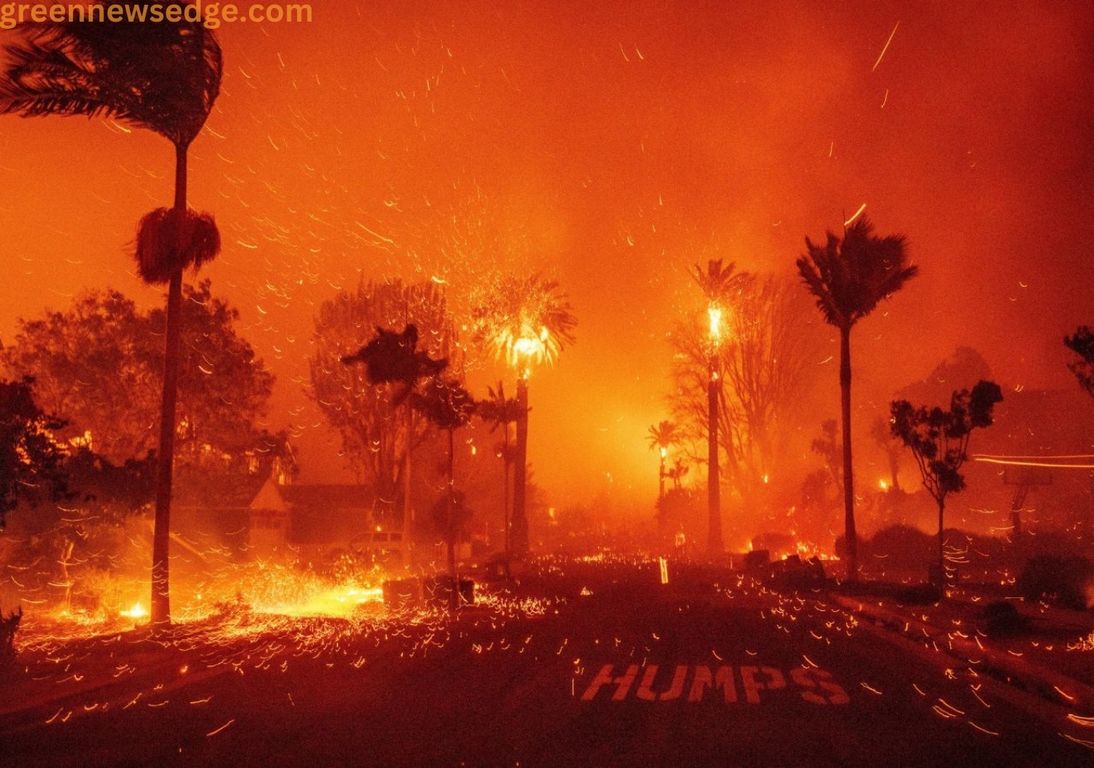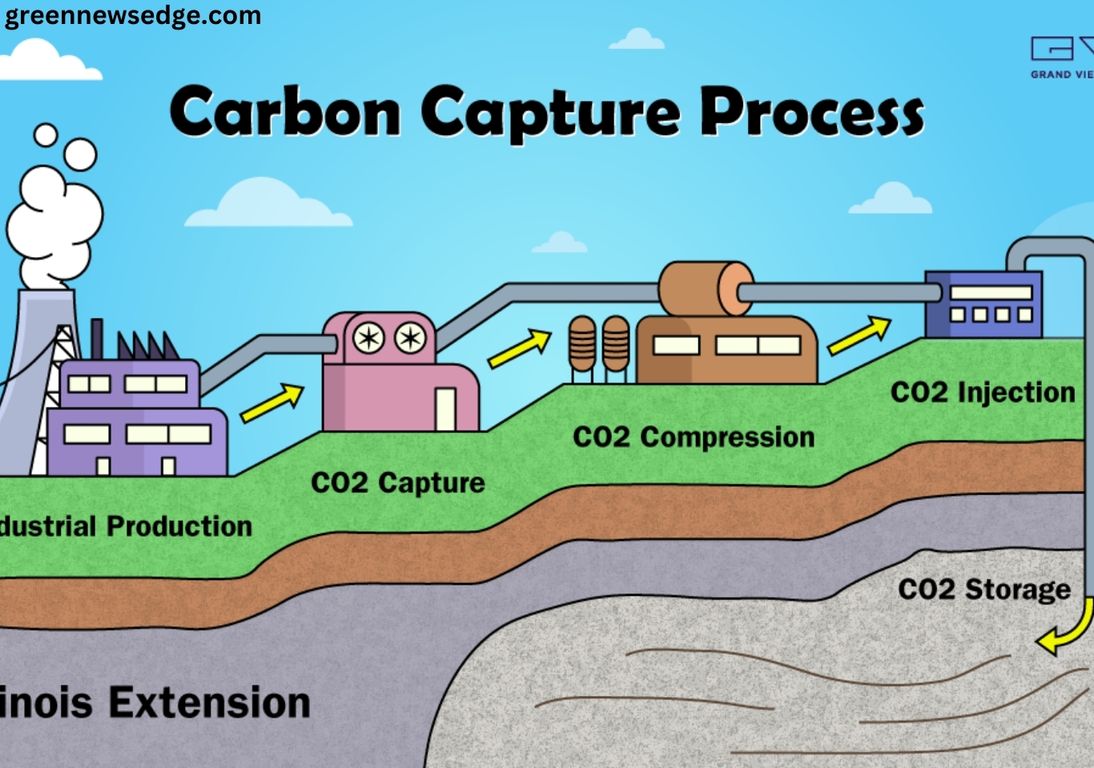Southern California is grappling with a devastating wildfire crisis as fierce winds and prolonged dry conditions fuel multiple blazes across the Los Angeles area. Firefighters are working around the clock to contain the infernos, but forecasters have warned of renewed strong winds that could lead to rapid fire spread. The National Weather Service has issued a red flag warning, labeling the situation as particularly dangerous. The fires, which erupted over a week ago, have already claimed dozens of lives, destroyed thousands of structures, and forced widespread evacuations, leaving communities on high alert.
Officials fear the fires could threaten densely populated neighborhoods and iconic landmarks, including the J. Paul Getty Museum and the University of California, Los Angeles. Emergency responders, aided by aerial water drops and fire retardants, are making progress, but the unpredictable winds pose a major challenge. President Joe Biden and California Governor Gavin Newsom have pledged full support for firefighting efforts, with federal and state resources mobilized to combat the catastrophe. With damage estimates reaching billions of dollars, the disaster is shaping up to be one of the worst in U.S. history, raising urgent questions about fire preparedness and resource management.
Firefighters Battle Blazes Across Los Angeles
Firefighters across Southern California are engaged in an intense battle to contain several large wildfires sweeping through the Los Angeles area. Despite their tireless efforts, the crisis remains far from over, as meteorologists warn of an impending surge in strong winds that could dramatically escalate fire activity. The greatest concern lies between late Monday and Wednesday morning, when sustained wind speeds are expected to reach 80 kph, with gusts peaking at 110 kph. These extreme conditions pose a significant risk of rapid fire expansion, making containment efforts increasingly difficult.
The National Weather Service has classified this situation as particularly hazardous, issuing a red flag warning to alert residents and emergency responders of the heightened danger. With dry conditions persisting and no substantial rainfall recorded in the region for months, firefighters face a formidable challenge in preventing the flames from spreading further into vulnerable communities. Authorities remain on high alert, urging residents in fire-prone areas to stay prepared for potential evacuations. As the fires continue to rage, emergency teams are deploying all available resources, including aerial water drops and fire retardants, in an effort to mitigate further destruction and protect lives and properties from this escalating disaster.
Dry Conditions Fuel Deadly Fires
Southern California has endured an extended dry spell, leaving the landscape highly vulnerable to wildfires. The prolonged lack of rainfall has created the perfect conditions for flames to spread rapidly, fueling the devastation that has unfolded over the past week. Since the fires ignited, at least 24 lives have been tragically lost, while the destruction has reached staggering proportions, with damages amounting to billions of dollars. Entire neighborhoods have been reduced to ashes, forcing thousands of residents to evacuate their homes and seek refuge in temporary shelters.
Firefighters have managed to make some progress in their containment efforts. A brief period of calmer winds provided an opportunity for emergency teams to intensify their operations, utilizing aerial water drops and fire retardants to slow the spread of the flames. However, with forecasts predicting a resurgence of strong winds in the coming days, concerns remain high that the fires could regain momentum and further threaten communities. Authorities continue to monitor the situation closely, urging residents to stay vigilant and prepared for sudden changes in evacuation orders as efforts persist to bring the catastrophic wildfires under control.
Major Fires and Containment Efforts
Southern California continues to battle three major wildfires, each leaving a trail of destruction and tragedy. The Palisades Fire, raging in the Pacific Palisades area, has already consumed 96 square kilometers of land, with containment efforts making slow progress at just 14%. This blaze has claimed the lives of eight individuals, adding to the mounting toll of the disaster. Meanwhile, the Eaton Fire, which has spread across North Pasadena and Altadena, has burned nearly 60 square kilometers. This fire has proven even deadlier, with 16 confirmed fatalities and a containment rate of 33%. Authorities fear the toll may rise, as 16 people remain missing in the affected areas, prompting ongoing search and rescue operations.
In contrast, the Hurst Fire in the Sylmar area has seen significant progress in containment efforts. After scorching more than three square kilometers, firefighters have managed to bring it to 89% containment, reducing its immediate threat. However, with strong winds expected to return, officials remain cautious, as shifting conditions could reignite embers and trigger new flare-ups. Emergency crews continue working relentlessly to control the fires, protect threatened communities, and locate those still unaccounted for, as the devastation unfolds across the region.
Widespread Destruction and Evacuations
The devastating wildfires raging across Southern California, along with those that have already been contained, have left a path of destruction, reducing more than 12,000 structures to rubble. Entire communities have been upended, with homes, businesses, and vital infrastructure lost to the relentless flames. The scale of displacement is staggering, as approximately 100,000 residents remain under mandatory evacuation orders, forced to seek refuge in temporary shelters or with loved ones. Many have been left uncertain about when they will be able to return home or what will be left when they do.
Officials have made it clear that no residents will be permitted to return until the region is deemed safe, emphasizing that the ongoing wind threats pose a significant risk of reigniting embers and spreading the fires further. With forecasts predicting powerful gusts in the coming days, emergency responders are prioritizing containment efforts and monitoring the situation closely to prevent additional outbreaks. Authorities continue to urge displaced residents to remain patient and prepared for extended evacuations. As firefighters work tirelessly to combat the flames, the focus remains on protecting lives, minimizing further destruction, and ensuring that communities can safely begin the recovery process once conditions stabilize.
President Biden Responds to the Crisis
President Joe Biden extended his heartfelt condolences to the victims of the devastating wildfires, acknowledging the profound loss suffered by families across Los Angeles. He expressed deep sorrow over the tragic deaths of 24 individuals, emphasizing the immense toll the disaster has taken on affected communities. Recognizing the gravity of the situation, Biden assured that the federal government is fully committed to supporting California’s firefighting and recovery efforts. He affirmed that federal agencies are actively coordinating with state and local authorities to provide essential resources, manpower, and emergency aid to help contain the fires and assist displaced residents.
In his statement, Biden also took a moment to honor the bravery and dedication of firefighters and first responders who have been working tirelessly on the front lines. He commended their unwavering commitment to protecting lives and properties, often risking their own safety in the battle against the relentless flames. The president reaffirmed that the nation stands in solidarity with California, pledging continued federal support to combat the wildfires and aid in recovery efforts. As the fires rage on, Biden’s words serve as a reminder of the resilience and unity required to overcome one of the most devastating wildfire crises in recent history.
Impact on Daily Life and Major Events
As Southern California grapples with the ongoing wildfire crisis, some signs of normalcy are beginning to return, with schools that were forced to close last week now resuming operations. However, the fires have continued to disrupt major sporting events, impacting schedules for professional teams in the region. The Los Angeles Lakers and Clippers, after temporarily halting their home games due to safety concerns, have now resumed play, allowing fans to return to the arenas.
Despite these efforts to restore routine, the impact of the wildfires remains evident in the sports world. A highly anticipated NFL playoff game featuring the Los Angeles Rams was forced to be relocated to Arizona, as officials deemed it unsafe to hold the event in Los Angeles amid the ongoing fire threats. Concerns over air quality, emergency response priorities, and evacuation protocols led to the decision, highlighting the far-reaching effects of the disaster. As firefighters continue battling the blazes and authorities assess the evolving situation, further disruptions to public events remain a possibility. The priority remains safeguarding lives and communities, ensuring that any return to normal activities does not compromise public safety amid one of the most destructive wildfire outbreaks in recent history.
Threats to Key Landmarks
As wildfires continue to rage across Southern California, officials are growing increasingly concerned about the potential threat to densely populated areas and cultural landmarks. With unpredictable winds and dry conditions fueling the flames, the risk of the fires advancing into urban centers remains high, raising alarms about the safety of residents and critical infrastructure. Emergency responders are closely monitoring fire movement to prevent further devastation in communities already grappling with mass evacuations and property loss.
Among the most at-risk sites is the J. Paul Getty Museum, home to a vast collection of world-renowned artworks, historical artifacts, and rare manuscripts. Any damage to this institution could result in an irreplaceable cultural loss. Additionally, the University of California, Los Angeles (UCLA), one of the nation’s top public universities, faces potential danger if the fires encroach on its campus. Protecting these institutions, along with residential neighborhoods and businesses, remains a priority for firefighters and emergency management teams. As containment efforts continue, authorities are urging residents in high-risk zones to remain vigilant, prepared for potential evacuations, and aware of rapidly changing conditions. The situation remains fluid, with officials taking every possible measure to prevent further destruction in the wake of this growing disaster.
Governor Newsom Calls for an Investigation
California Governor Gavin Newsom has characterized the ongoing wildfires as potentially the most devastating natural disaster in U.S. history, citing both the unprecedented scale of destruction and the staggering financial impact. With entire communities reduced to ash and thousands of structures lost, the economic toll is expected to be catastrophic. Preliminary estimates from AccuWeather place the total damage and financial losses between $135 billion and $150 billion, underscoring the long-term repercussions for residents, businesses, and state infrastructure.
In response to the sheer magnitude of the disaster, Newsom has called for an independent review of the firefighting efforts, seeking to understand the factors that contributed to the rapid spread of the blazes. He has raised critical questions about whether California’s water supply was simply overwhelmed by the sheer intensity of the fires or if the extreme wind conditions rendered traditional firefighting methods ineffective. As emergency responders continue working around the clock to contain the flames, the governor remains focused on assessing the state’s wildfire preparedness and response strategies. His push for a comprehensive investigation reflects growing concerns over how to prevent such large-scale destruction in the future, ensuring that California is better equipped to handle similar disasters in the years ahead.
National Guard and Military Assistance
In response to the escalating wildfire crisis, the U.S. Defense Department has mobilized significant resources to aid firefighting operations across California. More than 1,800 California National Guard personnel have been deployed to assist state and local emergency crews in their relentless battle against the flames. These troops are providing critical ground support, reinforcing containment lines, assisting with evacuations, and ensuring that affected communities receive the help they need during this ongoing disaster.
Additionally, specialized military aircraft have been dispatched to conduct aerial water and fire retardant drops, a crucial tactic in slowing the fire’s advance and protecting high-risk areas. These operations are being carried out in coordination with state firefighting agencies to maximize efficiency and target the most dangerous fire zones. Officials remain on high alert, working tirelessly around the clock to contain the infernos and prevent further destruction. Despite the challenging conditions, emergency teams continue to push forward, determined to safeguard lives, homes, and critical infrastructure. As the fires rage on, the combined efforts of federal, state, and local responders reflect an all-hands-on-deck approach to combating one of the most destructive wildfire outbreaks in California’s history.
Frequently Asked Questions(FAQ’s)
What is causing the wildfires in Southern California?
The wildfires are being fueled by extremely dry conditions, a prolonged lack of rainfall for over eight months, and strong Santa Ana winds, which can spread flames rapidly.
How many people have been affected by the fires?
The wildfires have claimed at least 24 lives, with 16 people still reported missing. Additionally, around 100,000 residents remain under evacuation orders.
How much damage have the fires caused?
According to preliminary estimates, the economic damage and losses range between $135 billion and $150 billion, including destruction of over 12,000 structures.
What areas are most affected?
The major fires currently burning include the Palisades Fire in Pacific Palisades, the Eaton Fire in North Pasadena and Altadena, and the Hurst Fire in Sylmar. These fires have collectively burned over 160 square kilometers.
What actions are being taken to contain the fires?
Firefighters are working tirelessly to control the blazes using ground crews, aerial water drops, and fire retardants. Over 1,800 California National Guard personnel and military aircraft have been deployed to assist in firefighting efforts.
When will evacuated residents be allowed to return home?
Officials have stated that residents will not be allowed to return until the wind warnings are lifted and the fire risk is significantly reduced.
How are major events in Los Angeles being impacted?
Some schools that had closed have resumed operations, but major sporting events, such as an NFL playoff game for the Los Angeles Rams, have been relocated due to safety concerns.
What steps is the government taking to address the crisis?
President Joe Biden has assured federal support, with agencies working closely with California officials. Governor Gavin Newsom has called for an independent review to assess firefighting efforts and preparedness.
Conclusion
The wildfires raging across Southern California have caused widespread devastation, claiming lives, destroying thousands of structures, and displacing tens of thousands of residents. With extreme winds and dry conditions fueling the flames, firefighters, emergency responders, and the National Guard are working tirelessly to contain the blazes and protect communities. Despite some progress in containment, the threat remains high, and officials are urging continued caution as new fire risks emerge.
As the state grapples with one of the most destructive wildfire outbreaks in its history, federal and state agencies are coordinating efforts to provide relief and resources. President Joe Biden has assured full federal support, while Governor Gavin Newsom has called for an independent review to assess the effectiveness of fire response strategies. The resilience of California’s communities, along with the dedication of first responders, will be crucial in overcoming this crisis. However, with billions in estimated damages and ongoing risks, recovery and rebuilding efforts will take time. Authorities continue to stress the importance of preparedness, urging residents to remain vigilant, follow evacuation orders, and support relief efforts. The fight against these wildfires is far from over, but with continued cooperation and response efforts, California will work toward recovery and rebuilding stronger than before.







